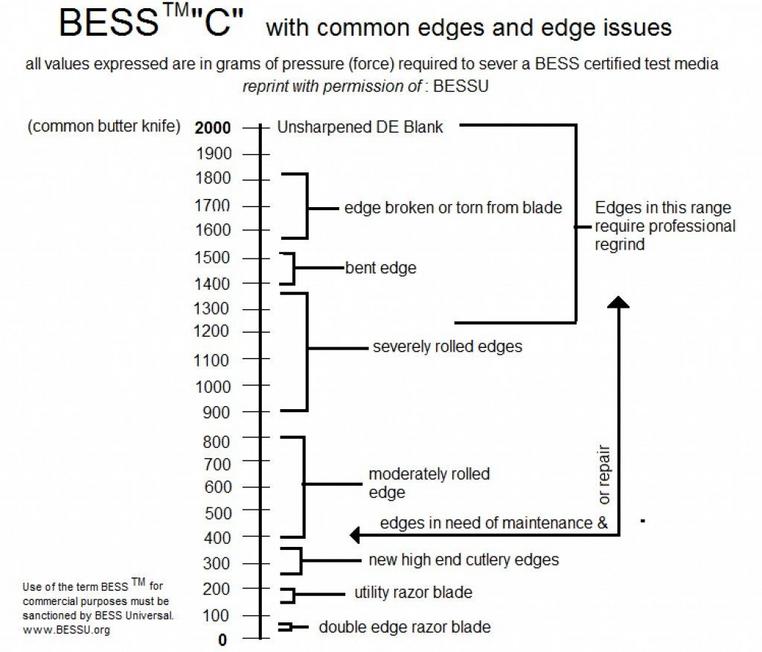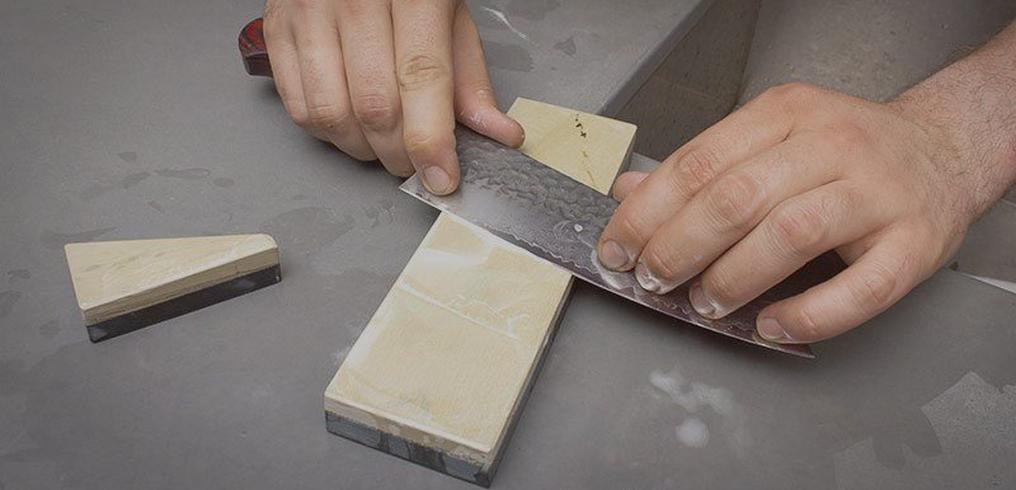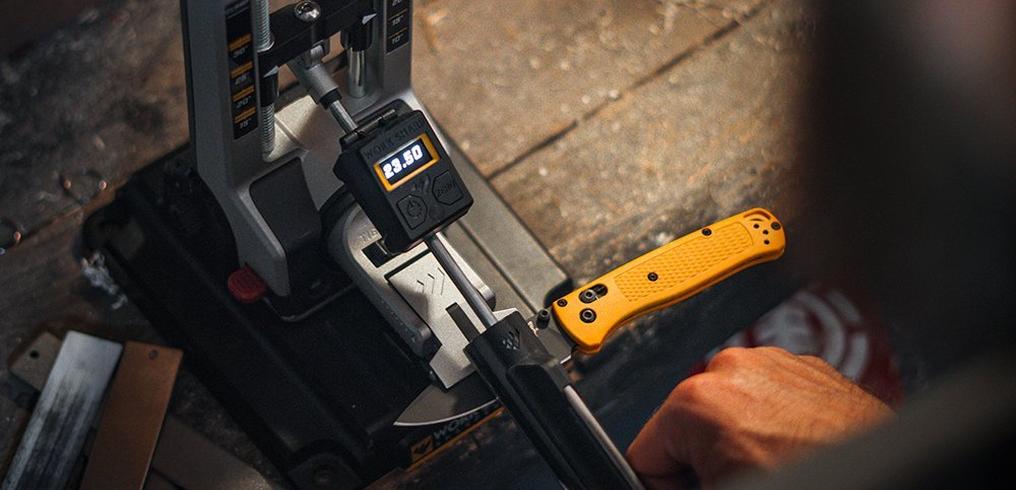How does the Edge-On-Up BESS sharpness test work?
The Edge-On-Up sharpness testers scientifically measure the sharpness of your knives. As such you will finally learn how sharp your knives really are. The result is that you not only improve your sharpening skills you can also check the state of your collection. But how do these BESS-certified sharpness tester work? Knivesandtools explains!
What is the BESS standard?
The standard used to determine the sharpness of knives is called the BESS: Brubacher Edge Sharpness Scale. This scale was developed by Mike Brubacher, owner of Edge-On-Up. He has a background in sensor and test development in various industries. In 2012 he started developing a standard that could measure the sharpness of knives and needles. The result is the BESS standard that was quickly adopted by experts and enthusiasts as one of the most user-friendly methods to determine the sharpness of a knife.
How does it work?
A holder contains a thin piece of synthetic wire. With a knife you cut through this thin wire with one single movement. The scale underneath the holder measures the maximum pressure applied: that is your test result. The pressure in grams is the value on the BESS C-scale. A great comparable standard for sharpness and one of the few ways to quantify sharpness.
What does the BESS value stand for?
The BESS value is the maximum weight you need to push your knife through a certified test medium. The sharper the knife, the less weight you need. A lower score is therefore sharper than a higher score. Because all tests are carried out with the same test medium you can easily compare the results.
The BESS scale
Because a number doesn't say a lot without context a table was set up to make sure you can see how the score relates to the total scale. From the 2000 BESS you need to cut through the test medium with an unsharpened knife, to the 0-score: ultimate sharpness. Granted: there are few knives that come close to the 0 BESS. A double-sided razor is approximately 50 BESS, to give you a better idea.
Advantages of the BESS sharpness scale
With the BESS everyone can test the sharpness of a knife. The Edge-On-Up test tools are relatively affordable. Therefore, you no longer need half a laboratory to end up with reliable results. As long as everyone uses the certified equipment and the certified test medium. As such you measure the sharpness of your knife like every other user in the world. Comparing results is, as such, easy!
BESS also provides clarity. Abstract terms like 'razor-sharp' or 'incredibly sharp' are replaced by a value. But also 'pretty blunt' suddenly has a value that can be compared to other values.
With the BESS method you only test one small part of the edge, right?
Yes, you do only measure one small part of the edge. However, this doesn't mean you cannot measure your knife in three places: at the tip, in the middle and at the heel of the edge. Based on these three numbers you can end up with a weighted average by adding the three values and dividing them by three.
What is the difference between the BESS A and the BESS C scales?
Today we always use the C-scale. The Edge-On-Up measuring tools use the C-scale. However, results from the past sometimes still appear on the BESS A-scale. This is why: when the BESS-scale was first introduced Brubacher he applied an analogue test method he was using at the time. However, as he progressed in his research and development he switched to high-quality, digital measuring equipment. As such he was able to also measure even sharper edges. He defined the BESS C-scale on these results: basically the same as the BESS A, but with a little extra space in the lower values. If you want to convert a BESS A-value to BESS-C all you have to do is add 50. From BESS C to A you deduct 50 until you reach 0. That is exactly why Brubacher added this extra range.
Edge-ON-UP Sharpness testers: must-haves for sharpness freaks
For anyone who truly loves sharp knives the Edge-On-Up sharpness testers are simply must-haves. If you want to improve your sharpening skills or want to test your gear in a reliable way a good measuring device is indispensable. It is how you determine the influence of that extra step in the sharpening process. But also when collecting knives the Edge-On-Up testers are great. It enables you to determine based on data if your knives need to be sharpened, not based on a gut feeling.
And think about the second-hand market for knives: how amazing is it to be able to say your knife is still 156 BESS sharp when you sell it? Everyone will immediately know that, that is really impressive. Or if a knife is not in great shape everyone can use the BESS scale and know that at a value of 543 it really needs to be sharpened.









